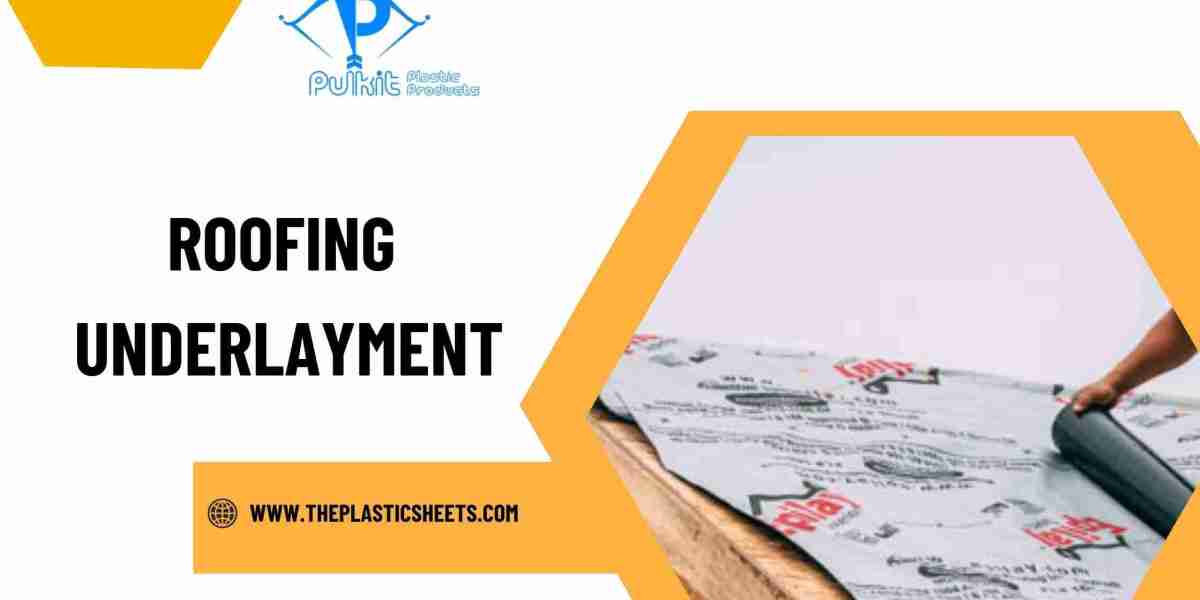When embarking on a roofing project, choosing the right materials can drastically affect the longevity and effectiveness of your roof. Among these materials, roofing underlayment plays a pivotal role in safeguarding your home from the elements. This article will guide you through the various types of roofing underlayments, their benefits, and how to choose the right one for your project, including specific aspects such as Roof underlayment for metal roofs and the best roofing underlayment options available.
What is Roofing Underlayment?
Roofing underlayment is a protective barrier installed beneath roofing materials. It serves as an additional layer of protection against water infiltration, wind damage, and other environmental threats. This underlayment can significantly enhance the efficiency and lifespan of your roof.
Types of Roofing Underlayment
There are generally three main types of roofing underlayment, each with unique properties:
Felt Underlayment: Made of organic or fiberglass materials, felt underlayment is one of the most traditional and widely used choices. It comes in two categories: organic felt made from recycled paper or wood fibers and fiberglass felt. While organic felt is less resistant to moisture, fiberglass felt tends to be more durable and less susceptible to mold growth.
Synthetic Underlayment: As a more modern option, synthetic underlayment is made from polyethylene or polypropylene. It is lighter, more resistant to tearing, and offers superior moisture protection compared to traditional felt. Synthetic underlayment is also less prone to curling over time, making it a favored choice among roofing professionals.
Rubberized Asphalt Underlayment: This type contains asphalt and rubber polymers, resulting in a highly waterproof product, perfect for roofs that are prone to high moisture or where ice damming might be a concern. This underlayment typically features a peel-and-stick installation method, enhancing its capacity to resist water infiltration.
Benefits of Roofing Underlayment
Choosing the right underlayment provides several benefits:
Moisture Protection: Underlayment acts as a barrier against rain, snow, and ice, preventing moisture from penetrating the roofing system.
Wind Resistance: High-quality underlayment can help keep roofing materials securely fastened, minimizing wind uplift damage.
Temperature Regulation: Underlayment assists in maintaining temperature consistency within your home, potentially lowering energy costs.
Mold and Mildew Deterrent: Some underlayments are designed to resist mold growth, promoting a healthier living environment.
Enhanced Durability: A good underlayment can extend the lifespan of your roof by protecting the deck beneath from deterioration.
Factors to Consider When Choosing Underlayment
When selecting the right roofing underlayment for your project, consider these factors:
Climate: Your local weather conditions will greatly influence your choice. In areas with significant rainfall, snow, or humidity, opt for a water-resistant synthetic or rubberized asphalt underlayment. Conversely, in drier climates, felt may suffice.
Roof Type: The type of roofing material you plan to use often dictates the type of underlayment. For example, when using metal roofs, a high-performance underlayment designed for metal applications is essential. This underlayment helps mitigate issues of condensation, expands the lifespan of the roofing system, and provides an excellent moisture barrier.
Building Codes: Ensure that your underlayment meets local building codes, which may have specific requirements based on your area’s climate.
Installation Method: Consider how the underlayment will be installed. Peel-and-stick options can simplify installation, especially on steep roofs.
Budget: Like any construction material, underlayment comes in a variety of price ranges. While it can be tempting to choose the cheapest option, remember that investing in quality materials can save you money in the long run by preventing future repairs.
Roof Underlayment for Metal Roofs
When opting for metal roofs, it is essential to choose an underlayment specifically designed for this type of roofing. Metal roofs are notorious for their potential for condensation. Therefore, using an underlayment with a high vapor barrier is crucial.
Synthetic Underlayment: Many manufacturers recommend high-quality synthetic underlayment for metal roofs due to its superior moisture-wicking properties.
Foil Underlayment: This is another popular option for metal roofing as it reflects radiant heat and helps keep homes cool in warm climates.
High-Rib Underlayment: In applications with ribbed metal panels, installing a high-rib underlayment prevents water from penetrating through the seams.
The Best Roofing Underlayment
Identifying the Best roofing underlayment can vary by project needs, but some popular high-performing underlayments include:
- GAF DeckArmor: A synthetic option providing slip-resistant features and excellent moisture management.
- CertainTeed DiamondDeck: Renowned for its toughness and tear resistance.
- Malarkey Highlander Cool Roof Underlayment: Great for climate management in warmer areas.
These products demonstrate a commitment to quality, durability, and weather resistance, making them among the best roofing underlayments available in the market.
Roof Underlayments in India
The market for roofing underlayment in India is evolving, with more options becoming available as the construction industry grows. Local manufacturers, alongside international suppliers, are developing products suited to the varied climatic conditions across the country. For instance, companies such as Pulkit Plastic Products provide a range of underlayments designed to meet local needs, catering to both residential and commercial projects.
Conclusion
Choosing the right Roof underlayments in india is integral to the success of your roofing project. With various options available—as well as specific underlayment considerations for different roofing types like metal roofs—making an informed decision can enhance the performance and durability of your roof. Keep climate, roofing materials, building codes, and budget in mind to select the most suitable product for your specific project needs.
Choosing the right roofing underlayment may seem like a small detail in a larger project, but it plays a crucial role in the overall performance, longevity, and reliability of your roofing system. Investing time and resources in selecting the right material will pay off in increased protection for your home or building.
FAQs
1. What is roofing underlayment?
- Roofing underlayment is a protective barrier installed beneath roofing materials, providing an extra layer of protection against moisture and wind.
2. What are the types of roofing underlayment?
- The main types include felt underlayment, synthetic underlayment, and rubberized asphalt underlayment.
3. What is the best roofing underlayment for metal roofs?
- High-quality synthetic underlayment or foil underlayment is typically recommended for metal roofs to manage condensation effectively.
4. Are there options for roofing underlayments in India?
- Yes, there are various local and international suppliers in India. Companies like Pulkit Plastic Products offer a range of roofing underlayments to suit local climates.
5. How do I choose the right underlayment for my project?
- Consider factors such as climate, roof type, local building codes, installation method, and budget to determine the best underlayment for your project.








